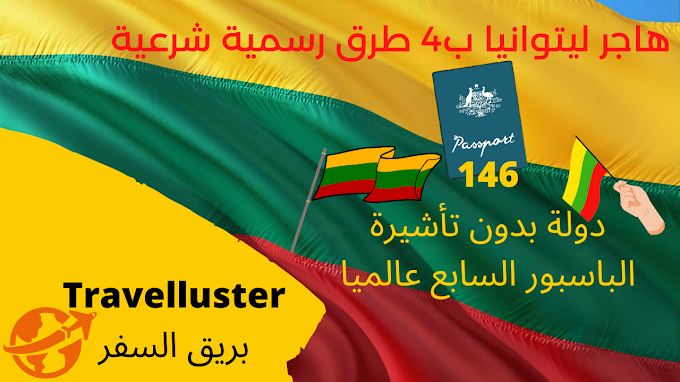Best 5 places you must
1-
In the popular imagination,
Tasmania summons up pictures of the peripatetic Tasmanian devil, a short-lived
Looney Tunes animated cartoon character. If divers had it their way, it would
conjure up pictures of weedy sea dragons and the other attractions of the
waters found off Tasman Peninsula.
Tasmania is a large island located 125 miles south of
Melbourne, across Bass Strait. This Australian state boasts large tracts of
undisturbed land; nearly 40 percent of Tasmania 26,000 square miles is given
over to national parks and World Heritage sites. cooler, moister, and lusher
than the bigger island to the north. In addition to the Tasmanian devil (yes,
there really is such a creature, a carnivorous marsupial the size of a smallish
dog), Tasmania has many endemic species of flora and fauna found nowhere else.
This level of endemism and diversity extends to Tasmania marine environment,
which is worlds away from the tropical environs of the Great Barrier Reef. marine
flora and fauna is extremely diverse for a cool, temperate environment, said
Karen Gowlett-Holmes. Tasmania is regarded as having the highest species
diversity of invertebrates and algae of any temperate area in the world. It is
estimated that only about 30 percent of the marine invertebrates have been
formally described scientifically. Our endemic species either to southern
Australia or just southeastern Tasmania include weedy sea dragons and hand-fish
(related to anglerfish and frogfish). These creatures attract many divers to
the region.
2-
There are few places in the world
where you can interact with large sharks all day and all night. One of those
places is Little Bahama Bank, off the west side of Grand Bahama Island. Grand
Bahama is one of the northernmost islands of the 700-island Bahamas chain, and
rests closer to Florida than any of the larger Bahamian islands. A number of
the islands are flanked by bank areas of shallower water, ten to thirty feet in
depth. Many of the banks adjoin far deeper water.
The waters around Little Bahama Bank are special for several
reasons, Jim Abernethy began. First, the region is very close to the Gulf
Stream current, which is constantly pushing fresh nutrients through. Second,
thanks to its location in the northern part of the Caribbean, the Bahamas have
a mix of temperate and tropical water, and a wide diversity and abundance of
marine life. The Bahamas have the largest conglomeration of large sharks ever
seen tigers, which can go up to twenty-four feet, and great hammerhead, which
can reach twenty-one feet. Bull, lemon, and oceanic white tips can also be
found there.
3-
Fortune hunters have long set
their sights on Cocos Island as a repository for ill-gotten treasures. Pirates,
buccaneers, and other assorted near-do-wells have visited the island for more
than three hundred years, purportedly parking their plunder on this remote
outpost off Costa Rica Pacific coast. Some believe that the Treasure of León
(Nicaragua), the Treasure of Lima (Peru), and countless shipments of gold and
jewels stolen from Mexico by Spaniards (and relieved from the Spaniards by
pirates) found their way to Cocos.
For Martha Watkins Gilkes and countless other divers, the true
treasures of Cocos lie off its coastline is one of the few places dived where pretty
much guaranteed action with big Martha began. large schools of hammerheads,
other times white-tip reef sharks, a giant whale shark, or even swordfish. And of
course, there are always the schools riding the bow of the boat and frolicking
in the water with you something all divers’ dream.
4-
An unintended boon of Fidel Castro
rise to power was the barring of visitors from Los Jardines de la Reina (The Gardens),
a 150-mile-long archipelago of some 250 islands located fifty miles off the
southern coast of Cuba. Recognizing the region rich marine life” and its
potential for tourism” Castros government designated the area (consisting of
1,000 square miles) a Cuban national park in 1996. Closed to commercial fishing
and inhabitation, Los Jardines comprise one of the world great protected
saltwater wilderness areas and certainly the largest protected marine park in
the Caribbean. said that in the earlier days of the revolution, Los Jardines
was Castro favorite sport fishing grounds. In his youth, he was also a
passionate diver. (The CIA apparently knew of Castro interest in diving; there
are several fairly well-documented accounts of dive-focused assassination
attempts, including one involving an exploding conch shell and another, a
tuberculosis-bacilli-infused regulator.)
The proliferation of marine life in Jardines de la Reina since
the national park designation has been amazing said Filippo Invernizzi. With
the help of scientists from all over the world, an entire ecosystem, an entire
chain of marine life, has been regenerated. The area preserved even encompasses
the migratory passages of some species. When I started diving here before the
conservation measures were put in place, it would be very common to not
encounter any sharks during a dive. Now, seeing seventy or eighty sharks per
dive is more the norm.
5-
not likely that Captain William
Bligh had much of an opportunity to enjoy the tropical appeal of Fiji let alone
its underwater marvels he sailed around the islands in the HMS launch in 1789.
After all, he was feeling a bit put out just been victim of one of history most
infamous mutinies, and was at the time under hot pursuit from two canoes full
of cannibals.
Steve Webster was
able to take in Fiji at a more relaxed place, though like Captain Bligh, he
came to the archipelago by way of Tonga. had friends who had dived in the South
Pacific, and I had seen many PBS programs on the topic, Steve began. certainly,
was curious. About ten years back, some friends had planned a diving trip to
Tonga. At the last minute they had to cancel, and I went in their stead. It was
a wonderful trip, but the emphasis in Tonga is on humpback whales. more interested in coral reefs. When I
mentioned this to the crew on the, the live-aboard we traveled with, they
encouraged me to visit Fiji. I put together a trip with volunteers from the
Monterey Bay Aquarium. Since that first trip, been back eleven times.
The Republic of Fiji
consists of some 300 islands.
























0 Comments